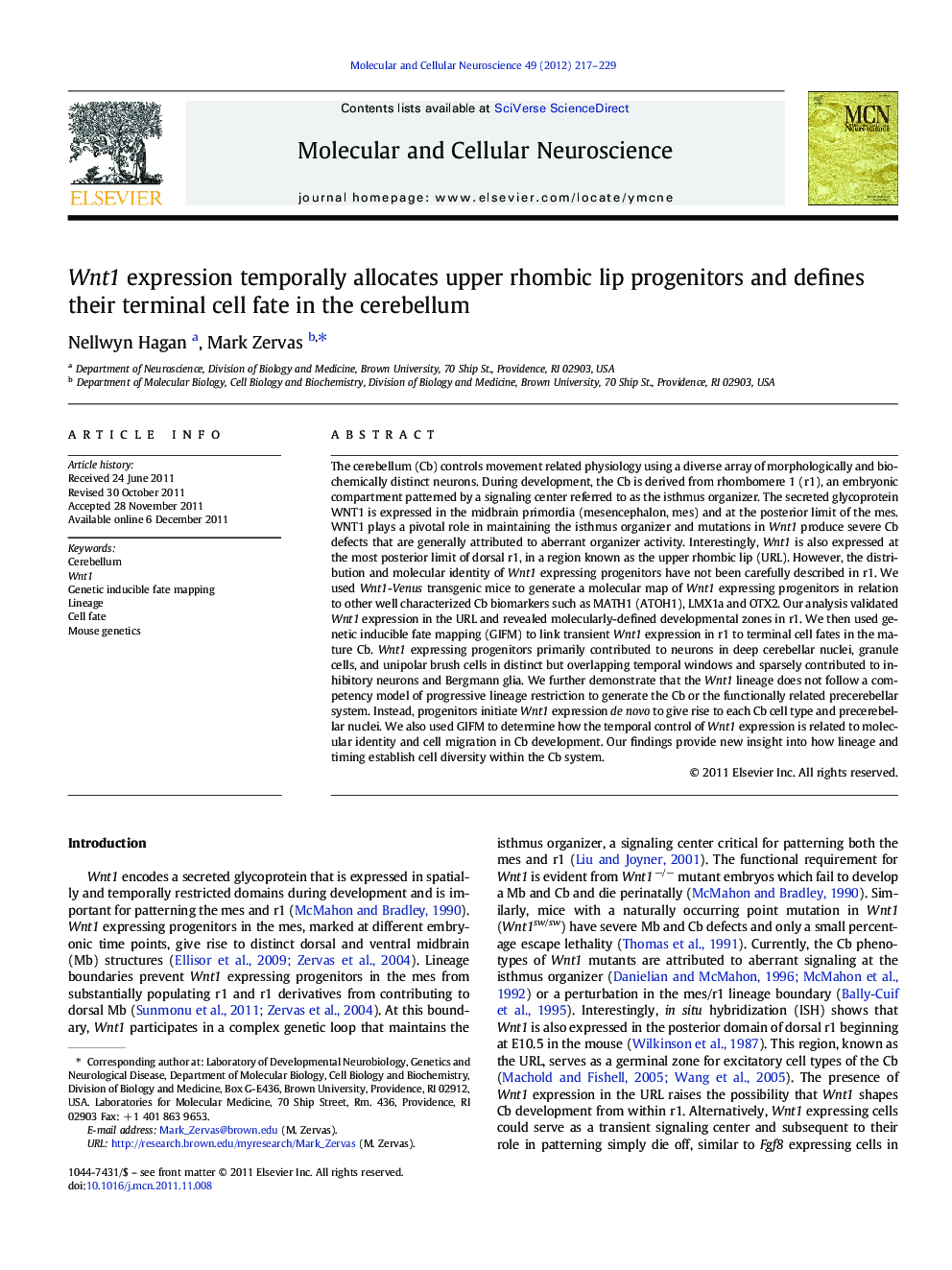| کد مقاله | کد نشریه | سال انتشار | مقاله انگلیسی | نسخه تمام متن |
|---|---|---|---|---|
| 10956552 | 1099384 | 2012 | 13 صفحه PDF | دانلود رایگان |
عنوان انگلیسی مقاله ISI
Wnt1 expression temporally allocates upper rhombic lip progenitors and defines their terminal cell fate in the cerebellum
دانلود مقاله + سفارش ترجمه
دانلود مقاله ISI انگلیسی
رایگان برای ایرانیان
کلمات کلیدی
موضوعات مرتبط
علوم زیستی و بیوفناوری
بیوشیمی، ژنتیک و زیست شناسی مولکولی
بیولوژی سلول
پیش نمایش صفحه اول مقاله

چکیده انگلیسی
The cerebellum (Cb) controls movement related physiology using a diverse array of morphologically and biochemically distinct neurons. During development, the Cb is derived from rhombomere 1 (r1), an embryonic compartment patterned by a signaling center referred to as the isthmus organizer. The secreted glycoprotein WNT1 is expressed in the midbrain primordia (mesencephalon, mes) and at the posterior limit of the mes. WNT1 plays a pivotal role in maintaining the isthmus organizer and mutations in Wnt1 produce severe Cb defects that are generally attributed to aberrant organizer activity. Interestingly, Wnt1 is also expressed at the most posterior limit of dorsal r1, in a region known as the upper rhombic lip (URL). However, the distribution and molecular identity of Wnt1 expressing progenitors have not been carefully described in r1. We used Wnt1-Venus transgenic mice to generate a molecular map of Wnt1 expressing progenitors in relation to other well characterized Cb biomarkers such as MATH1 (ATOH1), LMX1a and OTX2. Our analysis validated Wnt1 expression in the URL and revealed molecularly-defined developmental zones in r1. We then used genetic inducible fate mapping (GIFM) to link transient Wnt1 expression in r1 to terminal cell fates in the mature Cb. Wnt1 expressing progenitors primarily contributed to neurons in deep cerebellar nuclei, granule cells, and unipolar brush cells in distinct but overlapping temporal windows and sparsely contributed to inhibitory neurons and Bergmann glia. We further demonstrate that the Wnt1 lineage does not follow a competency model of progressive lineage restriction to generate the Cb or the functionally related precerebellar system. Instead, progenitors initiate Wnt1 expression de novo to give rise to each Cb cell type and precerebellar nuclei. We also used GIFM to determine how the temporal control of Wnt1 expression is related to molecular identity and cell migration in Cb development. Our findings provide new insight into how lineage and timing establish cell diversity within the Cb system.
ناشر
Database: Elsevier - ScienceDirect (ساینس دایرکت)
Journal: Molecular and Cellular Neuroscience - Volume 49, Issue 2, February 2012, Pages 217-229
Journal: Molecular and Cellular Neuroscience - Volume 49, Issue 2, February 2012, Pages 217-229
نویسندگان
Nellwyn Hagan, Mark Zervas,